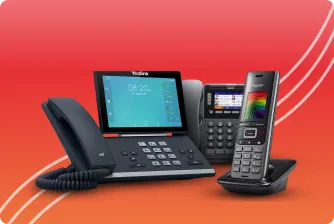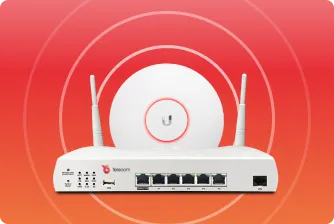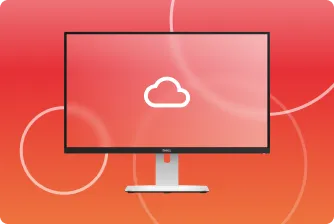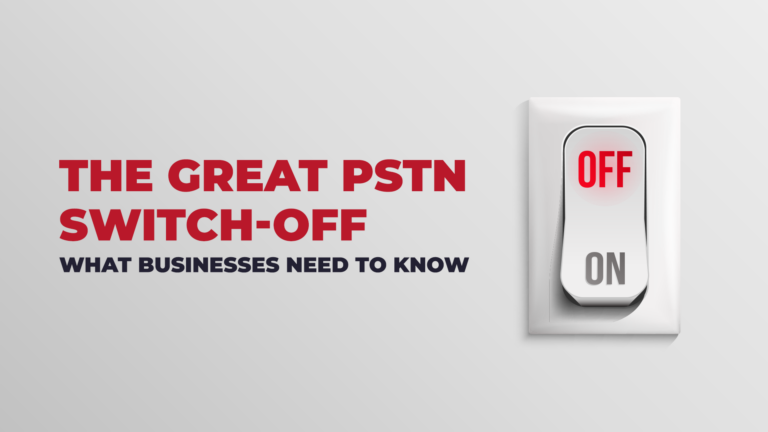In today’s fast-paced digital landscape, effective communication is the lifeblood of any successful enterprise. Whether you’re a seasoned entrepreneur or just starting out in the world of business, understanding telecoms is essential.
Telecommunications, often shrouded in jargon and technical complexities, can seem like a daunting realm to navigate. That’s why we’ve crafted this Telecoms Glossary with the aim of demystifying the terminology and concepts that are pivotal to making informed decisions about your business’s telecom needs and getting the most from your systems.
Our mission is simple: to empower you with the knowledge and confidence needed to make the most of your business telephony. So, let’s unravel the world of telecoms, one term at a time!
Understanding the Basics
Before diving headfirst into the world of telecoms, it’s essential to grasp the fundamentals. At its core, telecommunications, often shortened to “telecoms”, is all about transmitting information—whether it’s voice, data, or video—over long distances. It’s the magic that connects businesses, customers, and partners, making the modern world of commerce possible.
Telecoms infrastructure, the backbone of this magic, comprises various components. Think of it as the intricate plumbing and wiring of the digital age. This includes the networks that carry your data, the hardware and equipment that make it all work, and the intricate systems that ensure everything runs smoothly.
In this journey, you’ll meet some key players.
Service providers… like us are the telecoms wizards who offer you the means to connect with the world. They provide services like internet, phone lines, and more.
Networks… are transmission systems that enable information to be sent in analogue or digital forms. These transmissions move between various different sites by means of electromagnetic or optical signals. The information may consist of audio or video data or some other type of data.
Regulators… on the other hand, are the guardians of fairness and compliance, ensuring that the telecoms realm operates in everyone’s best interest.
Common Telecom Terminology
Now that we’ve laid the groundwork in understanding telecom basics, let’s take a closer look at some common telecom terms and jargon you’re likely to encounter on your business journey. Think of this as your cheat sheet for conversing confidently in the world of telecommunications.
Bandwidth: This term refers to the capacity of your telecom connection to carry data. It’s like the width of a highway—the wider it is, the more data can flow through.
Broadband vs. Narrowband: Broadband offers high-speed internet connections, ideal for businesses. Narrowband, on the other hand, has lower data transmission rates, often used for simpler tasks like text messaging.
VoIP (Voice over Internet Protocol): VoIP is a technology that enables voice calls over the internet, providing cost-effective and flexible communication solutions.
PSTN (Public Switched Telephone Network): PSTN is the traditional telephone system that uses copper wires to connect calls. Understanding this legacy system can help you make informed decisions about upgrading to digital alternatives.
DSL (Digital Subscriber Line): DSL is a type of broadband connection that uses existing telephone lines to transmit data.
Fiber Optic Internet: This high-speed internet option uses thin strands of glass or plastic to transmit data as pulses of light. It’s like upgrading from a dirt road to a superhighway.
Latency and Ping: Latency is the delay between sending and receiving data, while ping measures the time it takes for a signal to travel to a remote server and back. Low latency and ping are crucial for smooth video conferencing and online gaming.
Router vs. Modem: A router directs data traffic within your network, while a modem connects your network to the internet. Many devices combine both functions.
LAN (Local Area Network) vs. WAN (Wide Area Network): LAN is your local network within a building, while WAN connects multiple LANs across larger distances, often using the internet.
Mbps vs. Gbps: These abbreviations stand for megabits per second and gigabits per second, respectively, and indicate the speed of your internet connection. Faster is generally better for businesses with high data demands.
Armed with this telecom terminology, you’re now better equipped to navigate the telecom landscape and make informed decisions for your business. So, let’s keep the learning going as we unlock more telecom secrets in the journey ahead!
Business Telecom Services
In this section, we’re delving into the world of telecom services tailored to meet the specific needs of businesses like yours. Picture these services as the tools in your telecom toolbox, each designed to help your business thrive in the digital age.
Internet Services: Your gateway to the digital world, internet services are the backbone of modern business operations. Two key options you’ll encounter are:
- Dedicated Internet Access (DIA): A premium service that provides consistent, high-speed internet solely for your business, ensuring uninterrupted connectivity.
- MPLS (Multi-Protocol Label Switching): A secure and efficient solution for connecting multiple locations within your business network.
Phone Services: Clear and reliable communication is vital for any business. Explore these telephone service options:
- PRI (Primary Rate Interface): A traditional phone service that offers multiple channels for voice and data, ideal for larger business’.
- SIP Trunking: A more flexible and cost-effective way to make voice calls over the internet using Session Initiation Protocol.
Cloud Communications: Embrace the future of business communication with these cloud-based services:
- UCaaS (Unified Communications as a Service): A comprehensive solution that integrates voice, video, messaging, and collaboration tools into one platform.
- Hosted PBX: A cloud-hosted phone system that offers advanced features without the need for on-site hardware.
Mobile Services: In our mobile-centric world, mobile services are essential for businesses. Learn about:
- BYOD (Bring Your Own Device): A policy allowing employees to use their personal devices for work, boosting flexibility.
- MDM (Mobile Device Management): Tools and software to secure and manage business-related mobile devices and apps.
These telecom services are the gears that keep your business running smoothly, whether it’s staying connected with clients, managing your network efficiently, or streamlining communication. As you explore these options, you’ll gain a clearer picture of how to tailor your telecom strategy to your business’s unique needs. So, let’s continue our journey to becoming telecom-savvy business owners!
Choosing the Right Telecom Services
Selecting the right telecom services for your business is akin to picking the perfect tools for a craftsman. It’s all about finding the best fit for your unique needs and objectives. Here’s a roadmap to help you navigate this crucial decision-making process:
Assessing Business Needs: Start by identifying your business’s telecom needs. Do you require lightning-fast internet for video conferencing, or is a traditional phone system sufficient? Assess your current requirements and consider future growth. Think about what you need today as well as what you’ll need tomorrow.
Budgeting for Telecom: Budget constraints are a reality for most businesses. Determine how much you can allocate for telecom services without straining your finances. Keep in mind that quality services often pay off in the long run by enhancing productivity and customer satisfaction.
Scalability and Future-Proofing: Your business is a dynamic entity that will evolve over time. Look for telecom services that can scale with your growth. Consider future-proofing your choices by opting for technologies that are likely to remain relevant for years to come.
Remember, there’s no one-size-fits-all solution. Your telecom choices should align with your business’s unique goals and operations. Whether you’re upgrading your internet connection for seamless remote work or implementing a sophisticated phone system to enhance customer service, your telecom decisions should be driven by your vision for your business’s success. So, as you embark on this decision-making journey, keep your business’s needs and aspirations at the forefront of your mind.
Conclusion
In today’s business landscape, effective communication is paramount, and understanding telecom is the first step toward achieving that. Whether you’re optimising your internet connection, upgrading your phone system, or diving into the world of cloud communications, your newfound telecom savvy will serve you well.
Remember, technology and telecom services are continually evolving. Stay curious and stay informed. As your business grows and the telecom landscape shifts, ongoing learning will be your ally.
We encourage you to explore further, ask questions, seek expert advice, and keep refining your telecom strategy to meet the ever-changing demands of your business. Your commitment to understanding and leveraging telecom will undoubtedly contribute to your business’s success in today’s digital age. Here’s to clear connections, seamless communication, and a prosperous future for your business!
Here at Yo, we’re all about improving the success of the businesses we work with. So, If you are interested in learning more about improving your business development, or generally future-proofing your business – enter your contact details into the form below and we’ll be in touch about how we can help you and your business TODAY!











